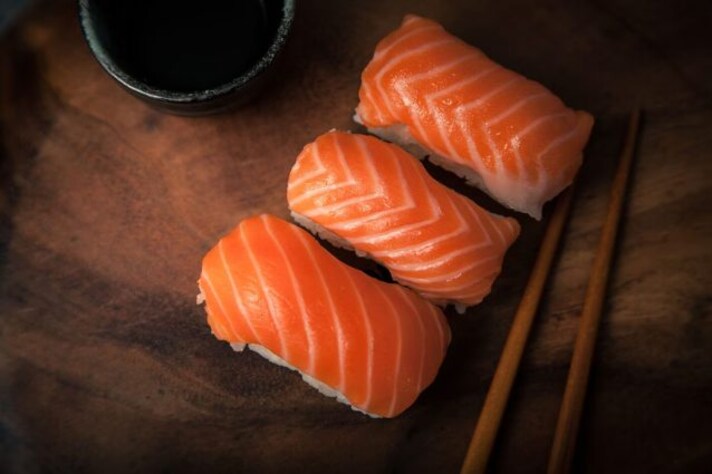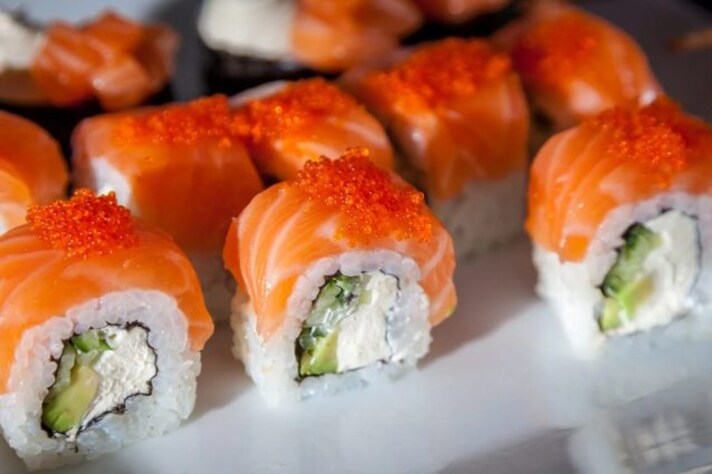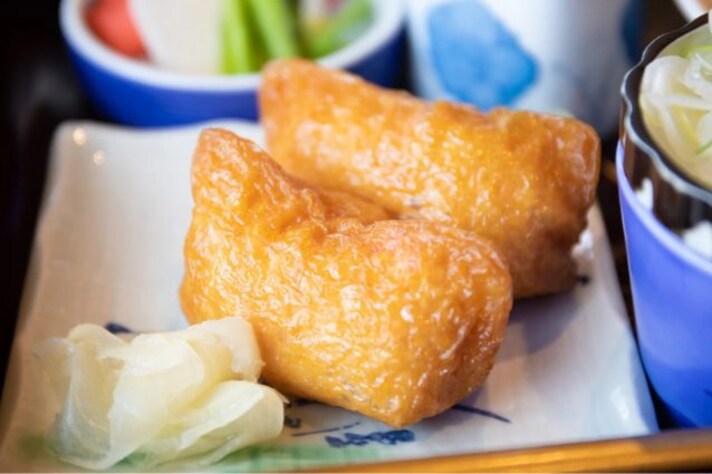
Not all the sushi we eat at the restaurant is really Japanese. A practical example? Everything that involves salmon has Scandinavian and not Japanese origins. Another famous example could be the uramaki, born in America. Basically we have lived all these years in a lie, but it is time to open our eyes: let's see the most famous types of sushi born outside the Land of the Rising Sun.
Not All Sushi is Japanese
There are three very famous variations of sushi, eaten all over the world, that have no direct connection with Japan. There are connections but always very weak, for this reason if you find yourself in Tokyo or Osaka, you will never find these versions of "traditional" sushi that is not so traditional.
1. Salmon Sushi: an Export Problem

If you go to a large Japanese restaurant after many years of all you can eat, some things will surprise you: first of all the service method, with the chef asking you to eat with your hands according to etiquette; the second thing is definitely the absence of salmon. Well yes, the salmon that we always associate with the idea of sushi is actually not present in traditional menus. The reason is actually very simple: the salmon that we eat most commonly, the " Salmo salar ", does not live in Japan, it is only found in the Atlantic Ocean. To tell the truth, the reason could also be another: the salmon that arrives on our tables is almost all farmed and this type of farming creates immeasurable damage to the environment. It is difficult for a high quality restaurant to dare to buy this type of fish.
So where does salmon sushi come from? From a brilliant and exhausting marketing campaign, very similar to the one that brought orange juice to tables around the world for breakfast. In 1985, Norway was facing a serious export crisis and this created a big problem for salmon farmers because they had too many animals that they couldn't "work off". The Norwegian government intervened and hired an important marketing manager, Bjorn Eirik Olsen, to try to resolve the situation. According to Japanesetime, Olsen went to Tokyo to try to open a trade channel with Japan, sensing the potential of their cuisine and the influence they would have on the world. If only he had never done it: the Japanese were horrified and poor Olsen took ten years to convince them to include "salmon sushi" on their menu. Actually, the Japanese are not entirely wrong: in Japan there is a type of salmon but, until the 90s, it was infested with parasites and could only be eaten after a long cooking. You can imagine the face of a Japanese when a guy from the other side of the world wants to offer him fish, which for them is toxic, to eat raw on a handful of rice.
Olsen tells NPR about his early years in Japan, all the aversion of a people who is still quite closed to Western novelties: "They told me it was impossible, that the Japanese would never eat a salmon roll because it didn't taste good. Among other things, Pacific salmon has a much more intense color than ours, it has a more pungent smell and a more massive head: not only did it seem like something horrible to eat, but they also thought it was a sort of pale copy of the salmon caught on their coasts. A tragedy".
As time passes, the situation in Norway becomes more desperate: Olsen tries one last move and goes to Nishi Rei, one of the largest Japanese fish companies. He sells them 5,000 tons of salmon at a very discounted price, in exchange for a particular clause: this product can be sold to grocery stores and restaurants, but they must make sushi with it. Nishi Rei unleashes its salesmen, Japanese to the core, and the restaurateurs begin to trust this exotic fish and put it on their menus.
Even today it is difficult to find "classic" salmon in Japanese restaurants, but since 2000, Pacific salmon have improved in quality. Thanks to Olsen's intuition, Norway solved a problem that was becoming unmanageable: from the 90s onwards, salmon sushi arrived on tables all over the world. The Norwegians lost a difficult customer in the East but gained hundreds in the rest of the world.
2. If They're Called California Rolls, Then There Must Be a Reason

We call it uramaki, or "inside and outside" roll, but in reality its name is California roll. According to the most accredited story, it was born in 1960 from the mind of Ichiro Mashita, sushi chef at Tokyo Kaikan in Little Tokyo in Los Angeles, out of necessity. Americans don't feel hungry when they eat the black roll and they are mentally blocked on the seaweed, they don't want to eat it. The chef's brilliant idea makes him "turn the hosomaki upside down" and put out what's inside and inside what's outside.
The idea works and, always Mashita, invents what we now consider to be the traditional California roll, with cucumber, avocado and crab meat: the crisis is making itself felt, he is just an immigrant often subjected to racism (Pearl Harbor is still a fresh wound in the 60s), and he can no longer support the restaurant by buying expensive tuna. He replaces it with surimi and with the two vegetables for a fresh product, which would have become a trend.
Ichiro Mashita's invention conquers all of America, contributing to the weakening of distrust towards Japan. The result is also the flourishing of preparations: soon after, a version with eel, avocado and toasted seeds arrives, or one with shrimp tempura inserted into the roll, or even the most famous Philadelphia Roll, made with salmon, avocado and cream cheese. All of this is impossible to find in traditional Japanese restaurants because the philosophical basis of sushi and Japanese cuisine is simplicity and clean tastes. The question arises spontaneously: if they can accept avocado or cheese with fish, is it possible that we can't accept a pizza with pineapple?
3. Hawaiian Sushi, Even Before Poke

Everyone has tasted poke, we order it during lunch break, during dinners with friends or with our better half. We have come into contact with the culture of Hawaii but in reality there is another "oriental" dish that the Hawaiians have exported to the world: the sushi cone. This type of sushi is not very famous in our country but it is in the rest of Europe. It is a fried tofu pocket, filled with rice, green beans, carrots and some aromatic herbs.
This type of American sushi is actually a variant of inarizushi, one of the oldest Japanese recipes that have reached us: in Japan they look like ravioli and these rolls are a tribute to the goddess Inari, protector of fertility, rice, agriculture, foxes, industry and worldly success. Unlike cone sushi (large and sweet), inarizushi is smaller and saltier.
;Resize,width=767;)
